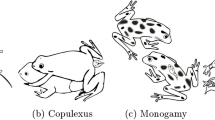Abstract
Molinate, a thiocarbamate chemical is a slightly to moderately toxic herbicide in EPA (Environmental Protection Agency) toxicity class III, and is a registered as a General Use Pesticide (GUP). Bombina orientalis is one of the most common amphibians in the world and comprise a large proportion of their total number in Korea. B. orientalis spawns in the rice fields at spring when the massive application of agricultural chemicals occurs. In the present study, we examined the effects of molinate on embryonic survival and developmental abnormality in B. orientalis embryos. The difference in survival rate between vehicle control and molinate treated embryos was not observed until the blastula stage. The first statistically significant decrease in embryonic survival was observed at mouth open stage following exposure to 100 μM molinate (46.8% vs. 81.1% in control). When the embryos develop to tadpole stage survival was significantly decreased at 50 μM molinate (35.9% vs. 68.9% in control), suggesting that the lowest observed effective dose (LOED) for systemic toxicity in B. orientalis embryos is 50 μM. In survived embryos molinate exposure produced several types of severe developmental abnormalities in order of frequency with bent trunk, neurula with yolk plug, bent tail, tail dysplasia, ventral blister, eye dysplasia, thick-set body and cephalic dysplasia. This suggests that molinate targets multiple events in embryonic and larval development in this frog species. Together this suggested that molinate was detrimental for survival and development following zygotic transcription after midblastula transition in B. orientalis embryos.


Similar content being viewed by others
References
Burdett AS, Stevens MM, Macmillan DL (2001) Laboratory and field studies on the effect of molinate, clomazone, and thiobencarb on nontarget aquatic invertebrates. Environ Toxicol Chem 20:2229–2236. doi:10.1897/1551-5028(2001)020<2229:LAFSOT>2.0.CO;2
Cooper RL, Barrett MA, Goldman JM, Rehnberg GL, McElroy WK, Stoker TE (1994) Pregnancy alterations following xenobiotic-induced delays in ovulation in the female rat. Fundam Appl Toxicol 22:474–480. doi:10.1006/faat.1994.1053
Ellis MK, Richardson AG, Foster JR, Smith FM, Widdowson PS, Farnworth MJ, Moore RB, Pitts MR, Wickramaratne GA (1998) The reproductive toxicity of molinate and metabolites to the male rat: effects on testosterone and sperm morphology. Toxicol Appl Pharmacol 151:22–32. doi:10.1006/taap.1998.8371
Finlayson BJ, Faggella GA (1986) Comparison of laboratory and field observations of fish exposed to the herbicides molinate and thiobencarb. Trans Am Fish Soc 115:882–890. doi:10.1577/1548-8659(1986)115<882:COLAFO>2.0.CO;2
Hartley D, Kidd H (1983) The agrochemicals handbook. Royal Society of Chemistry, Nottingham, UK
Heath AG, Cech JJ, Zinkl JG, Finlayson R, Fujimura R (1993a) Sublethal effects of methyl parathion, carbofuran, and molinate on larval striped bass. Am Fish Soc Symp 14:17–28
Heath AG, Cech JJ, Zinkle JG, Steele MD (1993b) Sublethal effects of three pesticides on Japanese medaka. Arch Environ Contam Toxicol 25:485–491. doi:10.1007/BF00214337
Heath AG, Cech JJ Jr, Brink L, Moberg P, Zinkl JG (1997) Physiological responses of fathead minnow larvae to rice pesticides. Ecotoxicol Environ Saf 37:280–288. doi:10.1006/eesa.1997.1563
Jewell WT, Miller MG (1998) Identification of a carboxylesterase as the major protein bound by molinate. Toxicol Appl Pharmacol 149:226–234. doi:10.1006/taap.1998.8381
Jewell WT, Hess RA, Miller MG (1998) Testicular toxicity of molinate in the rat: metabolic activation via sulfoxidation. Toxicol Appl Pharmacol 149:159–166. doi:10.1006/taap.1998.8380
Kang HS, Gye MC, Kim MK (2005) Effects of alachlor on survival and development of Bombina orientalis (Boulenger) embryos. Bull Environ Contam Toxicol 74:1199–1206. doi:10.1007/s00128-005-0708-x
Kang HS, Gye MC, Kim MK (2008) Effects of endosulfan on survival and development of Bombina orientalis (Boulenger) embryos. Bull Environ Contam Toxicol 81:262–265. doi:10.1007/s00128-008-9475-9
Kavlock R, Cummings A (2005) Mode of action: reduction of testosterone availability-molinate-induced inhibition of spermatogenesis. Crit Rev Toxicol 35:685–690. doi:10.1080/10408440591007386
Kuroda K, Yamaguchi Y, Endo G (1992) Mitotic toxicity, sister chromatid exchange, and rec assay of pesticides. Arch Environ Contam Toxicol 23:13–18. doi:10.1007/BF00225990
Meister RT (ed) (1991) Farm chemicals handbook ‘91. Meister Publishing Company, Willoughby, OH
Park BJ, Kyung KS, Choi JH, Im GJ, Kim IS, Shim JH (2005) Environmental fate of the herbicide molinate in a rice-paddy-soil lysimeter. Bull Environ Contam Toxicol 75:937–944. doi:10.1007/s00128-005-0840-7
Pena-Llopis S, Pena JB, Sancho E, Fernandez-Vega C, Ferrando MD (2001) Glutathione-dependent resistance of the European eel Anguilla anguilla to the herbicide molinate. Chemosphere 45:671–681. doi:10.1016/S0045-6535(00)00500-2
Phyu YL, Warne MS, Lim RP (2006) Toxicity and bioavailability of atrazine and molinate to the freshwater fish (Melanotenia fluviatilis) under laboratory and simulated field conditions. Sci Total Environ 356:86–99. doi:10.1016/j.scitotenv.2005.04.003
Rugh R (1962) Experimental embryology, 3rd edn. Burgess Publishing Co, Minneapolis, MN
Stoker TE, Cooper RL, Goldman JM, Andrews JE (1996) Characterization of pregnancy outcome following thiram-induced ovulatory delay in the female rat. Neurotoxicol Teratol 18:277–282. doi:10.1016/S0892-0362(96)90025-2
Tomlin C (2000) The pesticide manual: a world compendium, 12th edn. The British Crop Protection Council, Farnham, UK
Wickramaratne GA, Foster JR, Ellis MK, Tomenson JA (1998) Molinate: rodent reproductive toxicity and its relevance to humans—a review. Regul Toxicol Pharmacol 27:112–118. doi:10.1006/rtph.1998.1200
Acknowledgment
This study was supported by grants from Korean Research Foundation (KRF-2006-J01901).
Author information
Authors and Affiliations
Corresponding author
Rights and permissions
About this article
Cite this article
Kang, H.S., Park, C.J. & Gye, M.C. Effects of Molinate on Survival and Development of Bombina orientalis (Boulenger) Embryos. Bull Environ Contam Toxicol 82, 305–309 (2009). https://doi.org/10.1007/s00128-008-9602-7
Received:
Accepted:
Published:
Issue Date:
DOI: https://doi.org/10.1007/s00128-008-9602-7




